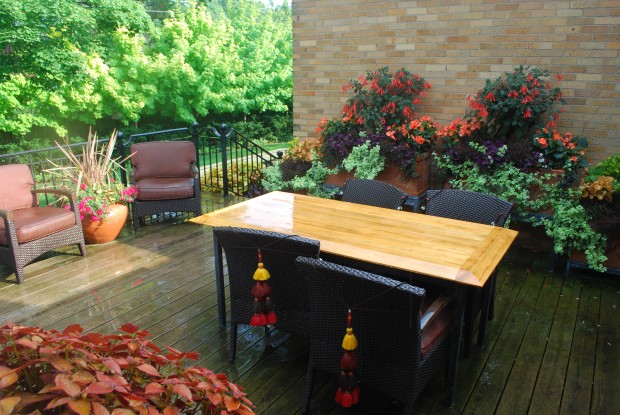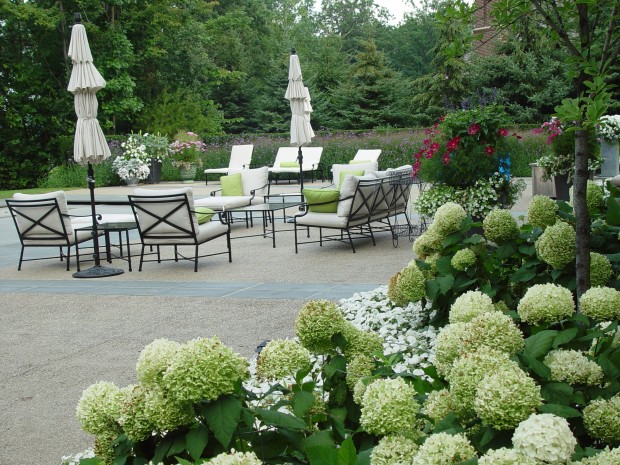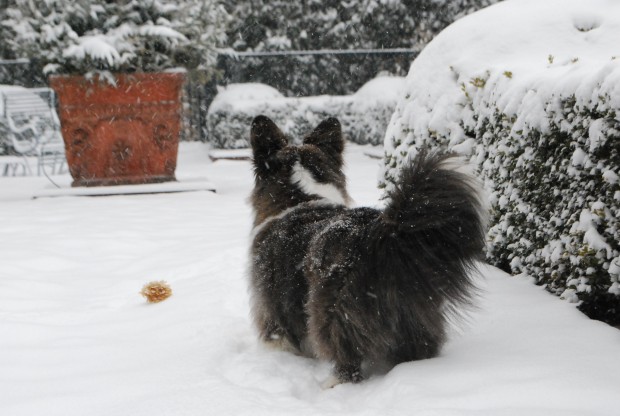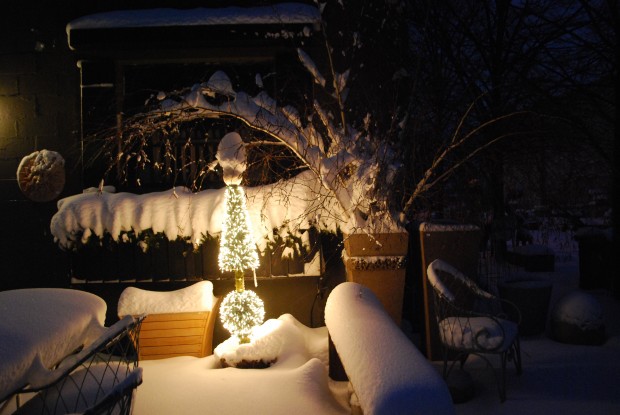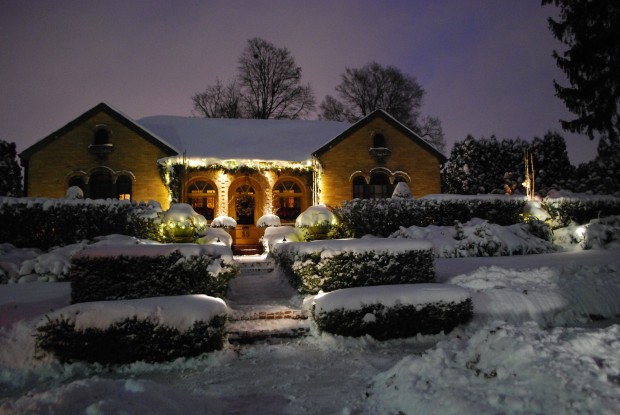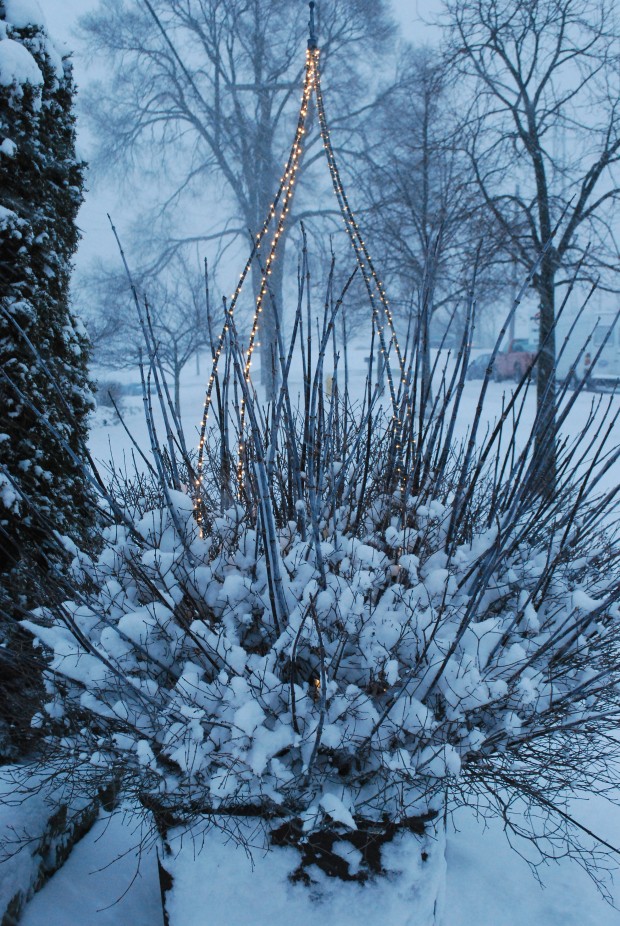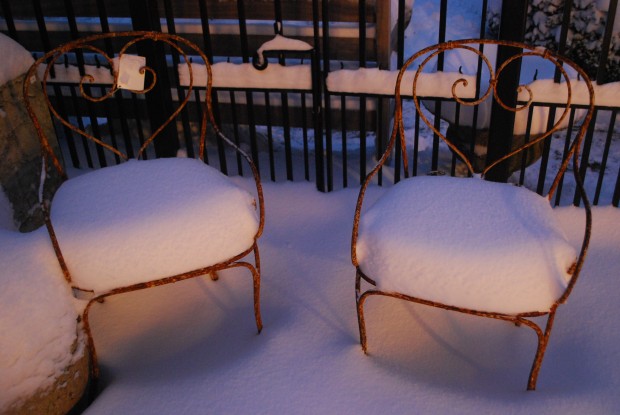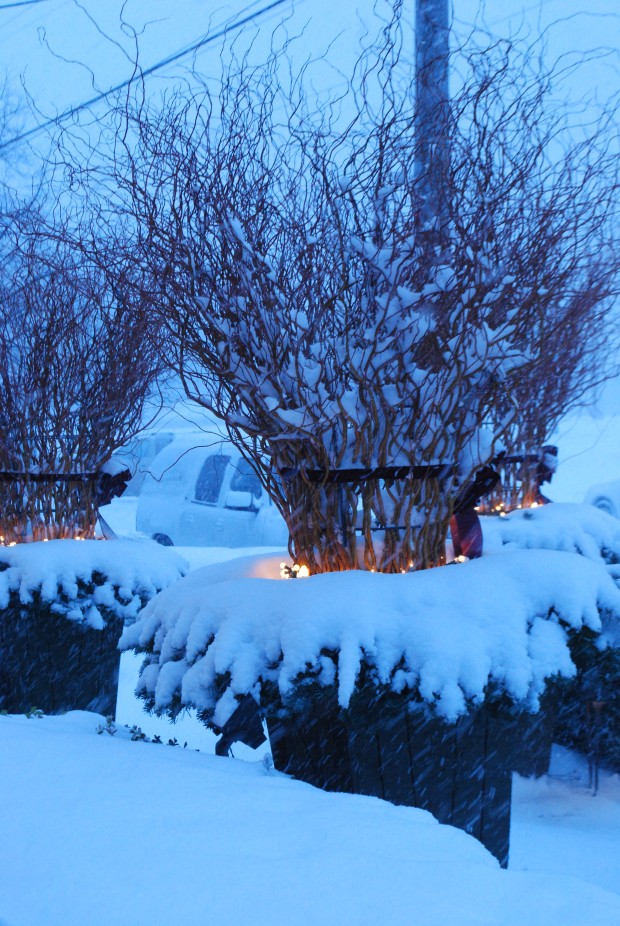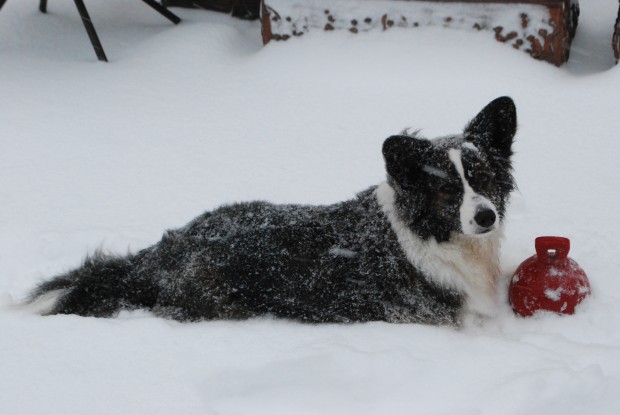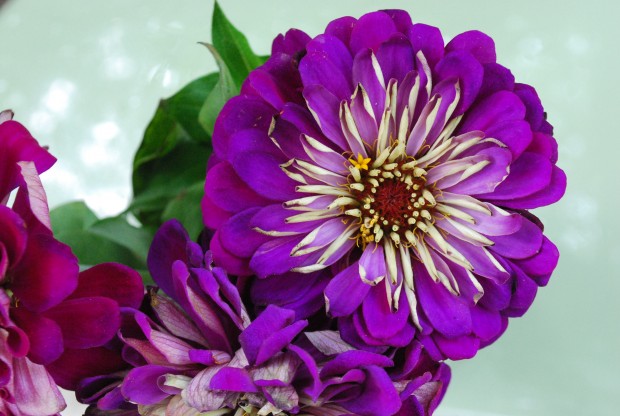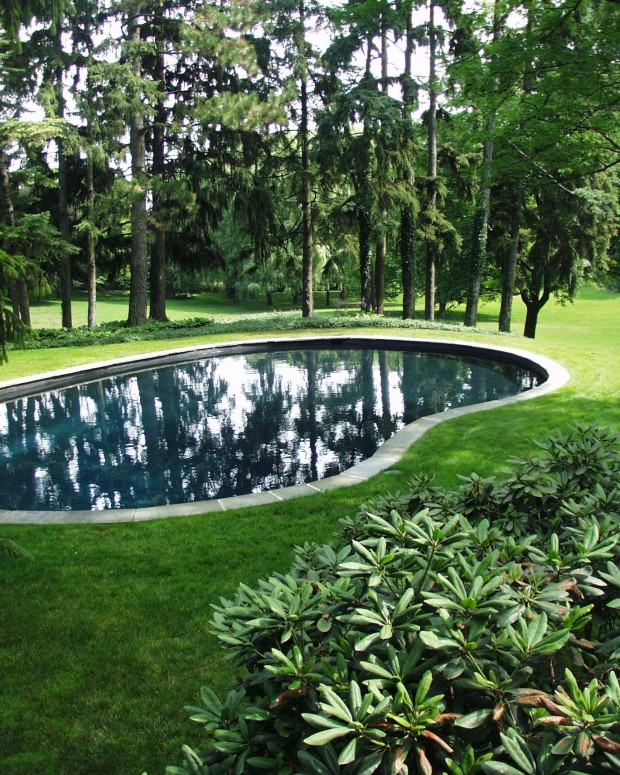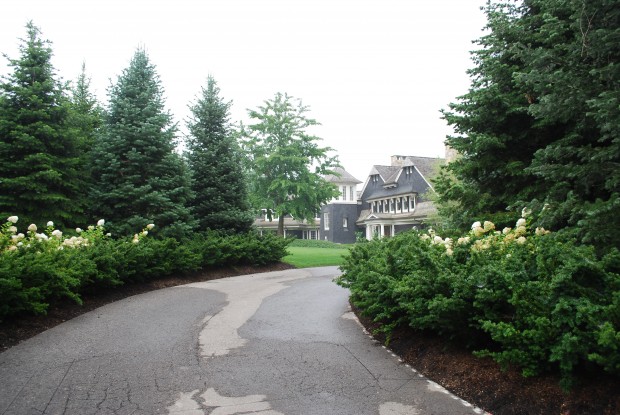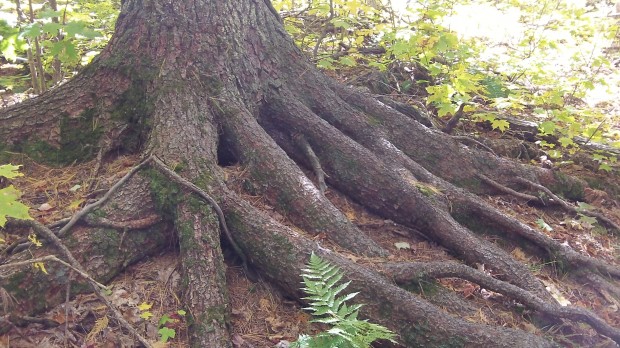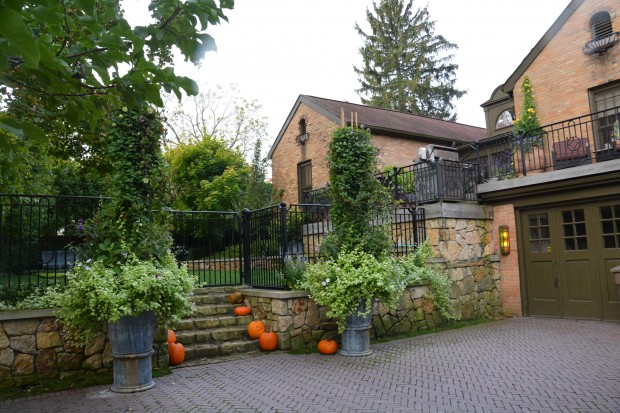 The pumpkins on the stairs flanked by my summer containers -visually jarring. Different seasons with different plant vocabularies are duking it out. The past 3 weeks has been the best weather we have had all summer. I haven’t taken these two pots apart, as I can’t get by the foolish hope that they will finally get better and be what they were meant to be. In another the season, the nicotiana , tibouchina, angelonia and the boston daisies would be blooming profusely. The petunias would have kept up with the licorice. Instead, I have robustly green blobs of potted plants that continue to prosper-courtesy of the warm fall weather.
The pumpkins on the stairs flanked by my summer containers -visually jarring. Different seasons with different plant vocabularies are duking it out. The past 3 weeks has been the best weather we have had all summer. I haven’t taken these two pots apart, as I can’t get by the foolish hope that they will finally get better and be what they were meant to be. In another the season, the nicotiana , tibouchina, angelonia and the boston daisies would be blooming profusely. The petunias would have kept up with the licorice. Instead, I have robustly green blobs of potted plants that continue to prosper-courtesy of the warm fall weather.
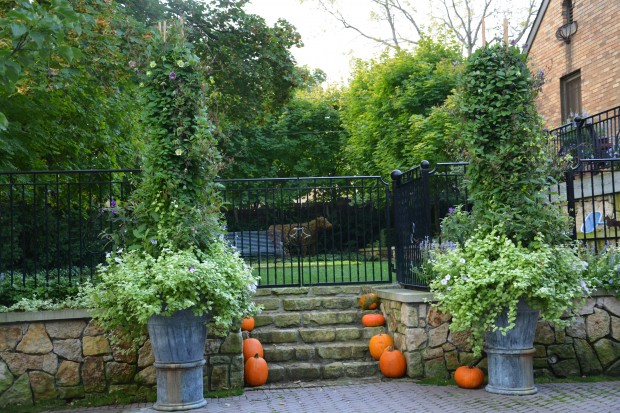 They don’t make enough visual sense to permit a decent photograph. Can you hear me sighing? I can talk this way about them, as they are my pots. If they were your pots, I would just be sympathetic. Rotten bit of luck, this cold and rainy summer. The saving grace of these pots? The cup and saucer vine has finally decided to bloom.
They don’t make enough visual sense to permit a decent photograph. Can you hear me sighing? I can talk this way about them, as they are my pots. If they were your pots, I would just be sympathetic. Rotten bit of luck, this cold and rainy summer. The saving grace of these pots? The cup and saucer vine has finally decided to bloom.
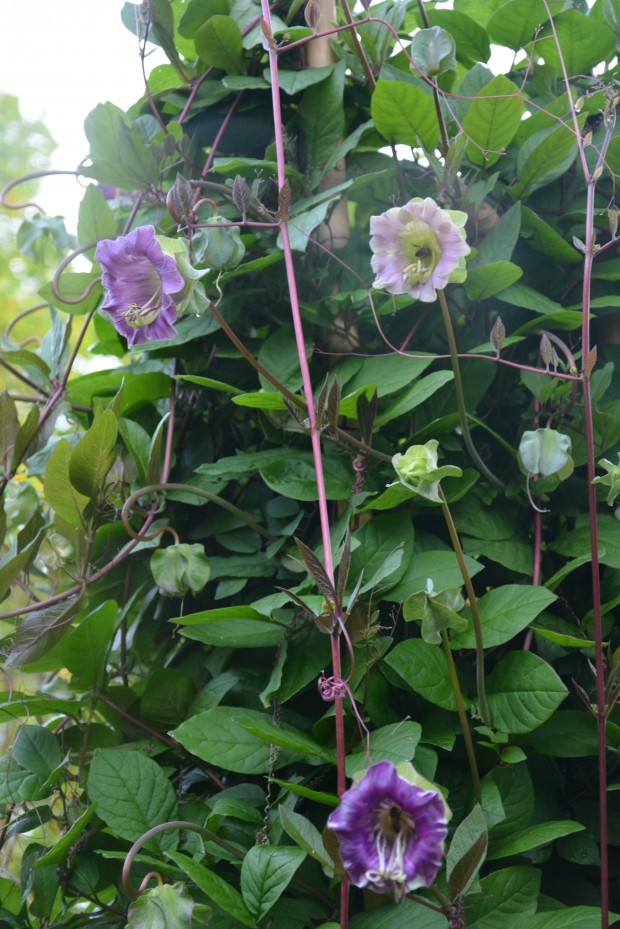 Cobaea scandens is a large growing vine that holds itself up by means of spiralling tendrils. I grow it as an annual, though it is hardy in zone 9 and 10. The vine is slow to get going, and really wants a warm and sunny situation. They don’t ordinarily begin to bloom until later in the summer, but they do bloom on into the fall. The flower buds are a pale lime green, the flowers a pale lavender. The lavender deepens to purple as the flower ages. The shape and size of the flowers make them well worth growing.
Cobaea scandens is a large growing vine that holds itself up by means of spiralling tendrils. I grow it as an annual, though it is hardy in zone 9 and 10. The vine is slow to get going, and really wants a warm and sunny situation. They don’t ordinarily begin to bloom until later in the summer, but they do bloom on into the fall. The flower buds are a pale lime green, the flowers a pale lavender. The lavender deepens to purple as the flower ages. The shape and size of the flowers make them well worth growing.
 It has taken the grass, scaevola and petunias a long time to grow to a size proportionate to the variegated boxwood. I rather like the look of this pot right now. I suspect that this is the best it is ever going to look, given that November is but 2 weeks away.
It has taken the grass, scaevola and petunias a long time to grow to a size proportionate to the variegated boxwood. I rather like the look of this pot right now. I suspect that this is the best it is ever going to look, given that November is but 2 weeks away.
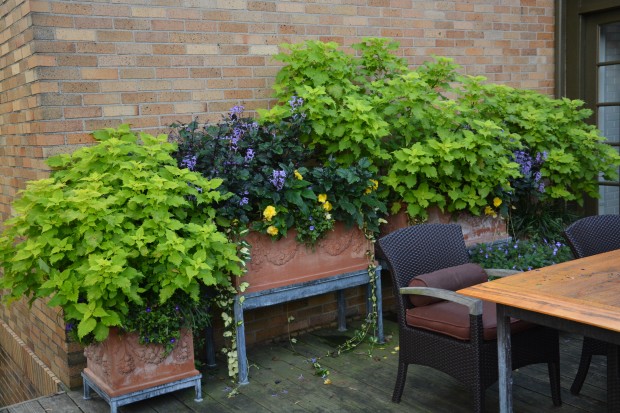 The Wasabi coleus grew strongly, in spite of the cool rainy summer. Mercifully, it has overtaken other plants that did not fare as well. These boxes have that topsy turvy look that is a sure sign that the garden season is waning.
The Wasabi coleus grew strongly, in spite of the cool rainy summer. Mercifully, it has overtaken other plants that did not fare as well. These boxes have that topsy turvy look that is a sure sign that the garden season is waning.
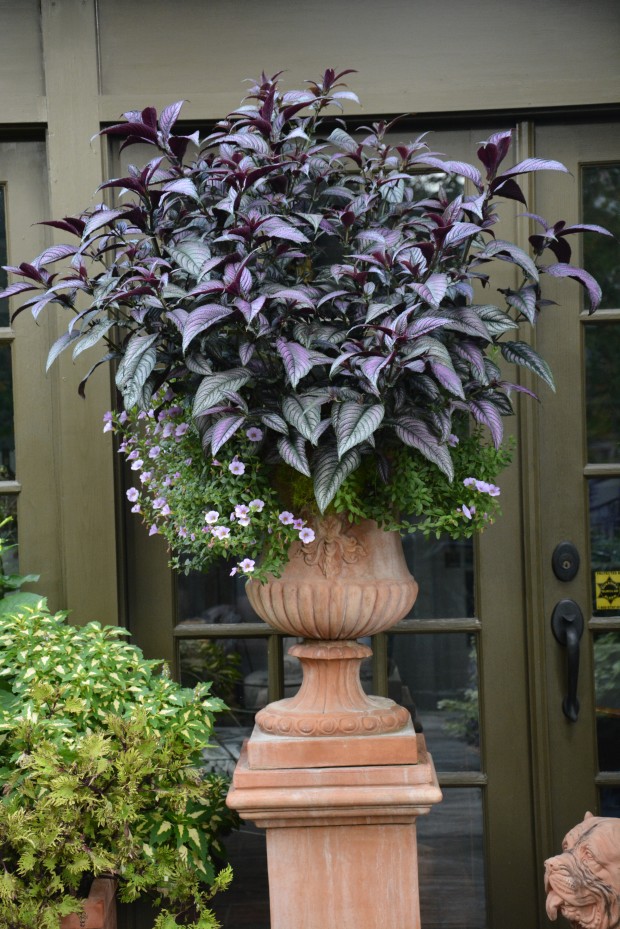 The Persian Shield has grown steadily all summer, and now dwarfs the pot in a way that suits me. This looks lush. It is also a reminder that annual plants do not make giant root balls. They spend most of their growing energy above ground, as they only have one season to grow. At this late date in the season, I have to watch the water carefully. This pot is full of roots, all of which need regular water. Even though the daytime temperatures are cooler, the available water is being absorbed at a surprisingly fast rate.
The Persian Shield has grown steadily all summer, and now dwarfs the pot in a way that suits me. This looks lush. It is also a reminder that annual plants do not make giant root balls. They spend most of their growing energy above ground, as they only have one season to grow. At this late date in the season, I have to watch the water carefully. This pot is full of roots, all of which need regular water. Even though the daytime temperatures are cooler, the available water is being absorbed at a surprisingly fast rate.
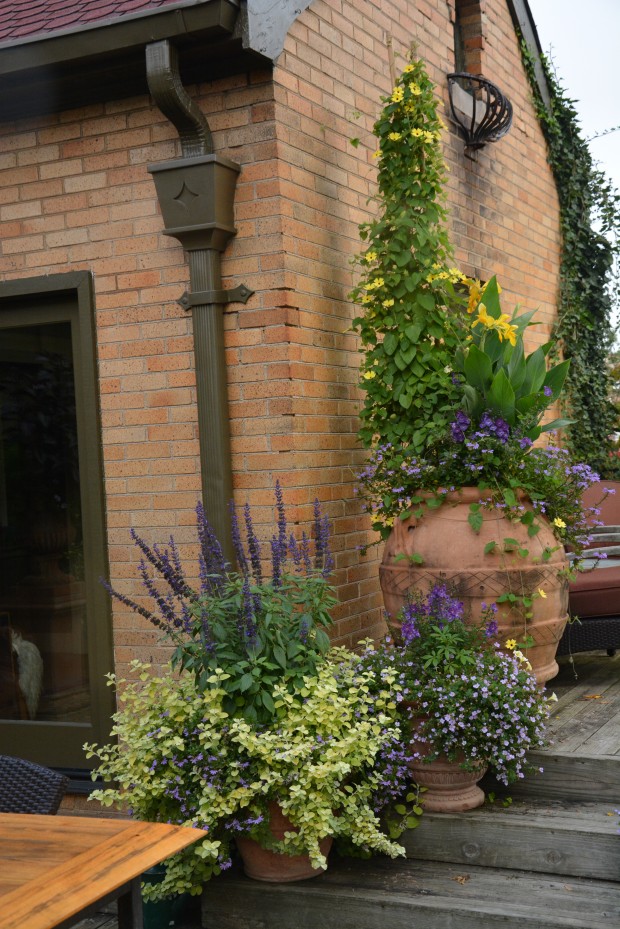 I did like how the thumbergia vines eventually draped over my olive jar, but they too need warm weather to thrive. Most of the blooming went on between the plant and the wall-on the back side. The brick absorbed heat during the day, and gave off heat at night. My cannas are in their first round of blooms since they were planted in May.
I did like how the thumbergia vines eventually draped over my olive jar, but they too need warm weather to thrive. Most of the blooming went on between the plant and the wall-on the back side. The brick absorbed heat during the day, and gave off heat at night. My cannas are in their first round of blooms since they were planted in May.
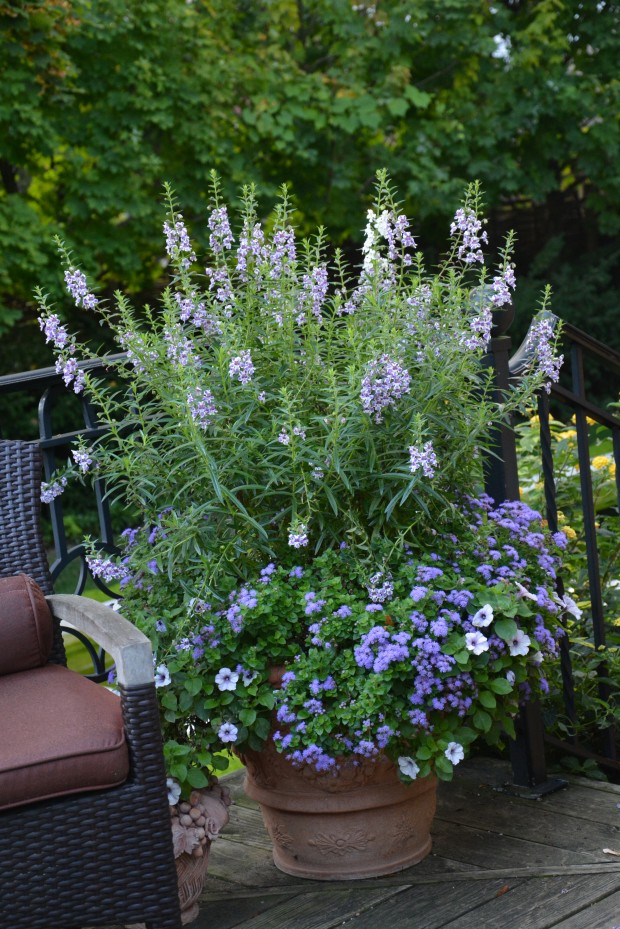 Angelonia that is thriving and blooming well is a sure sign that the fall has been warm. They like heat. The graceful habit is as much a pleasure as the flowers. Many annual plants have a very stiff habit. Angelonia can soften the mix in much the same was as a grassy plant. This new ageratum, “Artist”, has been a stellar performer. I would plant this again.
Angelonia that is thriving and blooming well is a sure sign that the fall has been warm. They like heat. The graceful habit is as much a pleasure as the flowers. Many annual plants have a very stiff habit. Angelonia can soften the mix in much the same was as a grassy plant. This new ageratum, “Artist”, has been a stellar performer. I would plant this again.
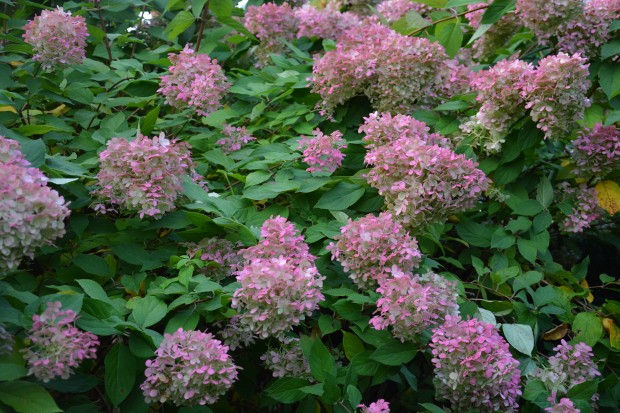 The Limelight hydrangeas are at the height of their fall color. This flourescent pink coloration I call the super nova stage. Like a star that glows dramatically just before it dies, this color is a sure sign that the garden is waning. Only rarely do we not have a hard frost before the end of October. The forecast seems fairly benign fore the next week. But as anyone who lives in Michigan knows, the weather can turn sharply at any time now. The perennial plants, shrubs and trees have been preparing for this a long time already. The growth of trees and shrubs slows dramatically the end of August. Having a long season to prepare for dormancy helps them survive over the winter. I have not cut the roses since the beginning of September. They are seeding-forming hips. I like the look of the hips on the roses. I better like that there are no pruned stems which would invite disease or insects.
The Limelight hydrangeas are at the height of their fall color. This flourescent pink coloration I call the super nova stage. Like a star that glows dramatically just before it dies, this color is a sure sign that the garden is waning. Only rarely do we not have a hard frost before the end of October. The forecast seems fairly benign fore the next week. But as anyone who lives in Michigan knows, the weather can turn sharply at any time now. The perennial plants, shrubs and trees have been preparing for this a long time already. The growth of trees and shrubs slows dramatically the end of August. Having a long season to prepare for dormancy helps them survive over the winter. I have not cut the roses since the beginning of September. They are seeding-forming hips. I like the look of the hips on the roses. I better like that there are no pruned stems which would invite disease or insects.
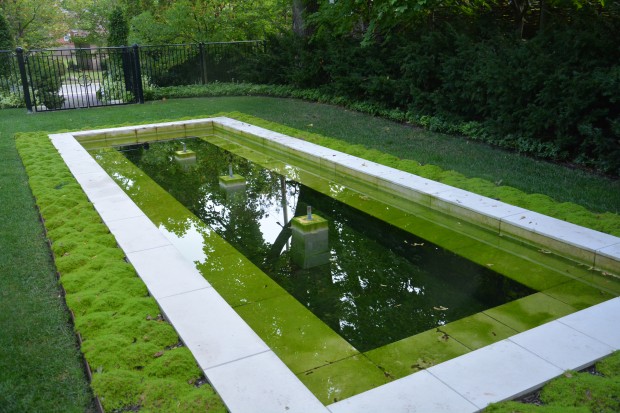 Buck has been so busy at Branch that he hasn’t had time to clean the fountain. I rather like that lime moss growing inside. It not only looks great with my Scotch moss, it is a sign of the time of year.
Buck has been so busy at Branch that he hasn’t had time to clean the fountain. I rather like that lime moss growing inside. It not only looks great with my Scotch moss, it is a sign of the time of year.


